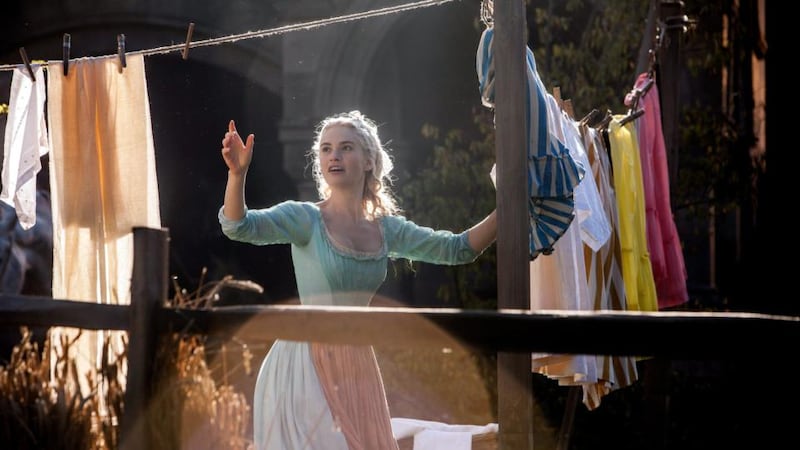Nobody is likely to confuse Kenneth Branagh's irresistible take on a very familiar story with an art film, but, in its lack of experiment, this latest Cinderella does feel positively experimental. We have, over the past few decades, been stuffed to bursting with reinterpretations of classic fairy tales. Angela Carter's feminist parsing formed the basis of Neil Jordan's Company of Wolves. Shrek and Enchanted attacked from the mainstream. Stephen Sondheim's musical Into the Woods. The bones have been stripped bare. Who would dare try and reanimate the beast?
The current version does mention Charles Perrault’s 17th-century text among its credits, but that’s not going to fool anybody. We are essentially looking at a live-action remake of Walt Disney’s 1950 animated film. Changing times and changing media have dictated the most significant alterations.
Computer-generated photorealistic mice being that bit more, well, mouse-like, we get a great deal less anthropomorphic cross-species chatter. Other sensitivities ensure that Cinderella’s step-sisters are now only “ugly on the inside”.

Such tweaks aside, the film plays very much by the ancient rules. We begin with young Cinderella (Eloise Webb) sharing an idyllic existence with sweet mother (Hayley Atwell) and kindly father (Ben Chaplin). When mum dies, dad marries a ghastly old battle axe who . . . Oh, why are we doing this? I may as well explain the layout of your own bathroom to you.
Charming leads. Next!
Nothing much need be said about the two romantic leads, who are charming in the requisite unthreatening manner. Playing the Prince, Richard Madden (Robb Stark from Game of Thrones) has had the dung wiped from his brow and has been squeezed into a much shinier, more brass- buttoned class of livery. As adult Cinders, Lily James (somebody or other in Downton Abbey) has just about enough vivacity to make virtue and self-sacrifice seem interesting.
Never mind all that. It’s the villains and the fantastic beings that liven up these affairs. Cate Blanchett engages with Lady Tremaine, the notorious stepmother, in the same manner that Godzilla engaged with Tokyo. Chris Weitz’s script does allow Blanchett a degree of financial insecurity by way of character development, and the actress injects some real pain into her jealous glances at the favoured step-daughter.
But such mild fleshing out, by nudging her ladyship away from the mythic, only serves to make her behaviour all the more reprehensible. Dressed in the manner of an Ascot attendee from My Fair Lady – Sandy Powell's delicious costumes will surely be nominated for an Oscar – Lady Tremaine comes across less as a heightened monster and more as a bloody horrible woman who needs to "see somebody" about her temper.
Blanchett, more than anybody else, gets the chance to demonstrate that familiarity is the point of the exercise. Children who love to be told the same story over and over again will often object, upon noting an alteration, that the teller is "getting it wrong". Just as audiences wait eagerly for "a handbag" during The Importance of Being Earnest, they will surely purr when Blanchett flings herself into "You shall not go to the ball." Helena Bonham Carter, goofy in gleaming teeth, is no less juiced-up as the Fairy Godmother.
"Getting it right" also means recreating that strange Anglo-Ruritanian Nowhere that Hollywood devised in the 1930s for Robin Hood, Ivanhoe and The Prisoner of Zenda. The current candy-coloured version – in which England stands in for California standing in for "England" – is so richly strange and culturally confusing that it might, accidentally, constitute the film's one act of ironic subversion.
That's almost certainly stretching it. This lovely film offers proof that there is still virtue in playing the game with a straight bat. If you require any further recommendation be aware that Cinderella is not in stupid 3-D. This is wonderful news.










